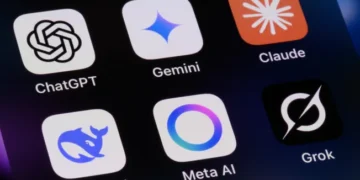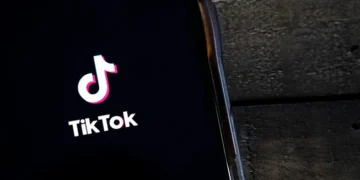NEW YORK — As marketers grow more risk averse amid an economic downturn and tightening budgets, American Eagle CMO Craig Brommers argued that now is as good a time as ever to mix up media tactics in pursuit of Gen Z. The executive brought the numbers to prove it to an Advertising Week panel Tuesday, highlighting recent wins on emergent platforms like Roblox that wouldn’t have occurred without a roll of the dice.
“If you’re on the brand or client side of the marketing equation, my recommendation is to put a reasonable innovation budget to the side and play with it,” said Brommers during the talk, titled “Pay No Attention to Attention.”
Early on during the discussion, which also featured speakers from Neuro-Insight, TikTok and Fandom, Brommers threw out a few numbers to illustrate the young cohort’s elusive qualities: Gen Z receives 10,000 messages each day, their average attention span has decreased to only eight seconds and it takes more than 20 touches to convert shoppers. In kind, it’s growing more challenging to hook Gen Z consumers.
American Eagle has continued to invest in new tools and platforms in recent years despite economic turmoil, and become a top Gen Z retailer as a result, Brommers said. Part of its success involves looking beyond grabbing consumer eyeballs and opening itself up to potential failures.
“Attention is probably the most important thing that our marketing team focuses on today. But attention, in our humble opinion, is not a roadblock,” Brommers said. “Attention for attention’s sake is not the game we all should be playing — attention to drive intention is probably the most important thing.”
On the quest for attention, the exec pointed to the brand’s own innovation budget as a major tool, offering leeway to try something new without the expectation that it always has to work.
“At American Eagle, we celebrate the failures as much as we celebrate the successes,” Brommers said. “It’s that innovation budget and having a little bit of fun that actually drives success at AE.”
Embracing risk
In a recent example of taking a gamble, Brommers mentioned that American Eagle on Monday (Oct. 17) activated for the first time on “anti-Instagram” app BeReal. It joins other marketers, including Chipotle and E.l.f. Cosmetics, in trying out the popular platform, but Brommers joked that the activation could very well flop.
The brand was similarly honest about its wavering expectations as it announced the move on Instagram with the caption, “TBH we’re not sure how this is gonna go,” while teasing the chance for exclusive deals.
“We’re just going to test and learn and have some fun and honestly, if it’s a train wreck, that’s okay,” said Brommers.
The train wreck scenario has played out before. Brommers pointed to a “shiny toy” that is a sour point for the company: QR codes. The exec said that at American Eagle — and even in his prior experiences at retail brands including Gap, Abercrombie & Fitch and Calvin Klein — the scannable technology proved to be unsuccessful, but not for the lack of trying.
Among successes, immersive tools have quickly become a reliable tactic for American Eagle. Brommers highlighted the brand’s augmented reality tie-in with Snapchat. He recalled the choice to activate on the platform being made lightly — thinking of it more as a fun, quick play for Gen Z — but the experience ended up driving a significant amount of revenue and has become a trusted tool for the brand.
Another fruitful new bet for the brand is activating on gaming platforms, Brommers said. American Eagle has seen promising results starting competitions on Amazon’s Twitch and integrating into NBA 2K22, where it created its own digital store featuring popular clothing pieces.
Above all else, Roblox has been a door-opener, Brommers continued, with American Eagle reportedly being the second most popular virtual brand behind Gucci. To date, the CMO said the retailer has attracted 50 million unique visitors, 30 million virtual clothing try-ons and an average of 10 minutes per session to its metaverse experiment. That’s convinced the exec that “there’s something there in that digital world.”
Read the full article here














